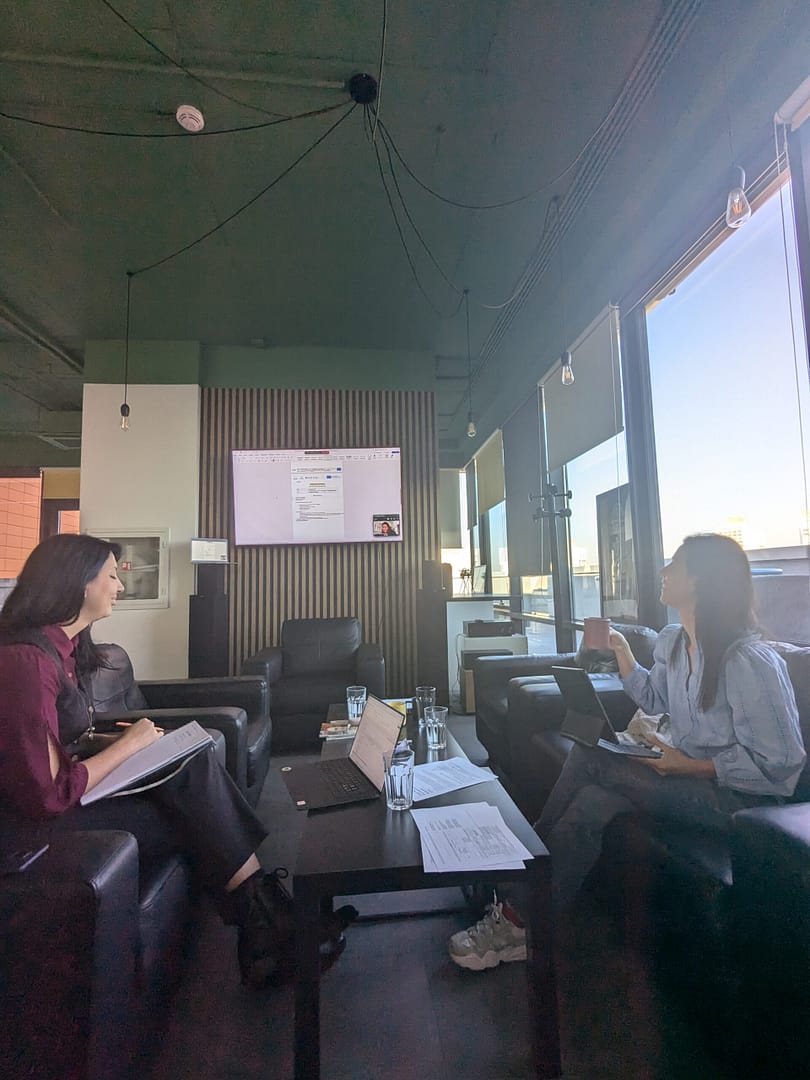Learning Outcomes:
In this session, participants will first delve into the concept of a circular economy, gaining a clear understanding of how it differs from the traditional linear economy;
Next, the session will explore what constitutes a circular business, highlighting how companies can operate within the circular economy framework;
Duration:
The session lasts 1 hour and 30 minutes, blending presentations, hands-on activities, and reflection
Materials needed:
PPT Presentation
Laptop
mobile device
projector/external screen
pens
papers
online evaluation form
Preparation
Before the session, the trainer should thoroughly prepare by familiarizing themselves with the topics to be covered. They should develop an engaging presentation designed to actively involve participants and foster discussion.
Session Topics:
- “What is a circular economy?”
- “What is a circular business, its benefits, and various circular business models”
To make the session more relatable, the trainer should also research and incorporate examples of circular businesses operating within the EU, providing real-world context to the theoretical concepts.
In addition to content preparation, the trainer should ensure the room is set up to comfortably accommodate all participants. This includes arranging seating, testing any necessary equipment, and creating a conducive learning environment.
Finally, the trainer should prepare an online evaluation form for participants to complete after the session. This form will help gauge the effectiveness of the session and gather feedback for future improvements.
Description
The second session of the module builds directly upon the previous activity, ensuring a smooth transition into the new material by linking the group’s earlier discussions with the content that will be covered.
To start, the trainer will present an overview of the circular economy, tailored to fit within a 5-minute timeframe (recommended time) while incorporating insights of the group from the previous activity “Exploring Circular Economy & Business-Think-Pair-Share “.
This presentation will highlight key topics, including a clear definition of the circular economy and a diagram illustrating its core principles.
Following this, the trainer will shift the focus to circular business definitions and models in a 10-minute segment (recommended time) while incorporating the insights of the group from the previous activity “Exploring Circular Economy & Business-Think-Pair-Share”. This portion of the session will cover several essential topics:
- Definition and Significance: The trainer will define what a circular business is and explain why adopting a circular business approach is important.
- Benefits: The session will highlight the advantages of circular business practices, emphasizing how they contribute to sustainability and long-term success.
- Exploring Circular Business Models: Participants will learn what constitutes a circular business model, including guidance on how to create one and an overview of the different types available.
- Examples from the EU: To bring the concepts to life, the trainer will present examples of successful circular businesses within the European Union, demonstrating how these models are applied in real-world scenarios.
After the theoretical component, participants will engage in a hands-on group exercise to solidify their understanding.
The trainer will divide the attendees into groups of four and explain the task. Each group will be tasked with identifying eight examples of circular businesses across various industries within the EU.
These examples will be presented to the audience, and each group’s presentation must include the following elements:
- Field of Activity: The industry or sector in which the business operates.
- Main Products or Services: A description of the primary offerings of the business.
- Mission and Vision: An overview of the business’s mission and vision, highlighting its long-term goals.
- Circular Business Approach: An explanation of how the start-up, project, or business incorporates circular principles into its operations.
Participants will have 30 minutes to conduct research and prepare their presentations. During this time, the trainer will provide continuous support to ensure the activity runs smoothly:
- The trainer will display the outline of the presentation structure on the projector, providing clear guidance on what is expected from each group.
- The trainer will be available to answer questions and offer clarifications, helping participants stay on track and understand the task at hand.
- The trainer will also observe group dynamics, ensuring that all members are actively participating and contributing to the research and the upcoming presentation.
After the research phase, each group will have the opportunity to present their findings to the audience. This 15-minute segment allows participants to:
- Showcase the circular businesses they’ve discovered.
- Analyze and discuss how these businesses implement circular economy principles in real-world contexts.
This phase is crucial for reinforcing the theoretical knowledge gained earlier and for encouraging critical thinking and practical application.
The session will conclude with a 15-20 minute debriefing, see below the details.
Debriefing
After the practical exercise, the session transitions into a learning check and debriefing phase.
Presentation and Debriefing
As part of the learning check, participants will present the outcomes of their practical exercise. During this time, the trainer will guide the discussion by asking questions (see below) in order to summarize the key takeaways from both the theoretical presentations and the hands-on activity.
Debriefing Questions
To facilitate reflection, the trainer will pose the following questions to the group:
- What are the most important concepts you learned about circular businesses from the presentations?
- How has your understanding of the circular economy and its significance evolved after the theoretical discussions?
- Can you identify the benefits of circular business practices that were highlighted, and how they can be applied in real-world scenarios?
- What did the hands-on activity teach you about applying circular business principles in practice?
- How did the activity help you better understand the process of creating a circular business model?
- What challenges did you encounter during the activity, and how did you address them?
- How do the theoretical insights and practical experiences from this session complement each other?
- What key takeaways will you apply to your own business or work environment moving forward?
- In what ways do you feel more prepared to implement or advocate for circular business practices after this session?
Q&A and Group Discussion
The session will then move into a Q&A and group discussion, providing an opportunity for participants to engage in a deeper conversation about the exercise and the activity as a whole. This discussion allows for the exchange of ideas, clarification of any uncertainties, and further exploration of the topics covered.To facilitate reflection, the trainer will pose the following questions to the group:
- What surprised you?
- What do you know now that you didn’t know before?
- What adjective would you use to define this experience?
- Describe what you experienced during this experience.
Evaluation and Feedback Collection
Participants will be asked to complete an online evaluation form, providing valuable feedback on the session. This feedback will help the trainer assess the effectiveness of the activity and identify areas for improvement.
Tips
The trainer must possess a deep and thorough understanding of the topic at hand. This expertise forms the foundation upon which the training is built, ensuring that the content delivered is both accurate and insightful.
The trainer should begin promptly, introducing themselves to the participants with a warm and welcoming demeanour. This initial introduction sets the tone for the session and establishes a rapport with the attendees.
Following this, the trainer must clearly outline the objectives and agenda of the session, providing a roadmap for what participants can expect to learn and accomplish.
Engagement is crucial throughout the session. The trainer should actively involve participants through thoughtful questions and interactive discussions. This approach helps maintain interest and encourages deeper understanding by prompting participants to reflect on and discuss the material being presented.
Ensuring that all participants are actively engaged and grasp each element of the training process is a fundamental responsibility of the trainer. It is not enough for the trainer to present the material; they must also verify that participants are following along and understanding the content.
Finally, the trainer will gather feedback to assess the effectiveness of the training session. This feedback is collected through online evaluation forms and a debriefing process. Analyzing this feedback allows the trainer to refine their approach and improve future sessions, ensuring continuous enhancement of the training experience.
The trainer will keep on the screen the presentation on the circular business models and outline the details of the upcoming exercise.
While pens and paper will be available if needed, the trainer, emphasizing the project’s green initiative, will encourage participants to use their mobile devices for note-taking and to complete the practical exercise. Additionally, participants are advised to use recycled paper if they choose to write notes by hand.
Handouts and resources
European Circular Economy Stakeholder Platform
Circular economy
Circular economy diagram
Circular economy business models
Circular economy business models explained
The trainer(s) can use these handouts for the session or create their own, as long as the same basic concepts are included (Circular economy, circular business circular business models from EU).
More To Explore
Co-Design Processes and Methodologies
Learning Objectives (LOs)
Mentoring methodologies and strategies
Learning Objectives (LOs)


